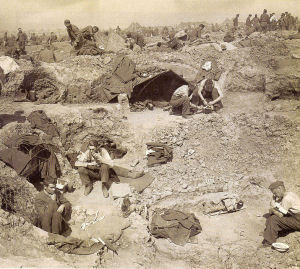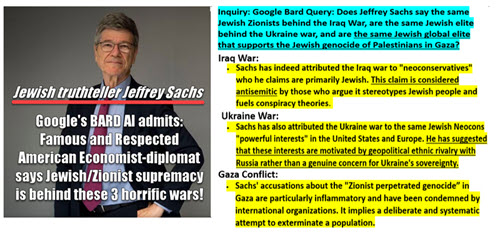
How three million Germans died after VE Day
The following review appeared in The Telegraph in Britain. It discusses the murder of at least three million Germans, primarily women, children, and the elderly, after VE day. In actual fact, at least another 3 to 6 millions Germans perished in the East long before VE Day: they were murdered, raped, and ethnically cleansed from their ancestral homeland in what was central and eastern areas of Germany. This Holocaust of millions of innocent Germans, of course, has received little of the attention of the the Jewish Holocaust. Most people are not even aware of the massive atrocities against the German people at the end of the Second World War. Why the Jewish Holocaust receives huge media attention 62 years after the end of the war can surely be explained by two factors: 1) powerful Jewish influence in media in almost every Western nation, and 2) The Holocaust is today used a political weapon necessary for the State of Israel. The Holocaust has been used as the bludgeon to justify the ethnic cleansing and barbarous occupation of Palestine by Jewish extremists. This eye-opening review deserves your reading and so does this new book by Giles MacDonogh. — David Duke
Nigel Jones reviews After the Reich: From the Liberation of Vienna to the Berlin Airlift by Giles MacDonogh
Giles MacDonogh is a bon viveur and a historian of wine and gastronomy, but in this book, pursuing his other consuming interest – German history – he serves a dish to turn the strongest of stomachs. It makes particularly uncomfortable reading for those who compare the disastrous occupation of Iraq unfavourably to the post-war settlement of Germany and Austria.
MacDonogh argues that the months that followed May 1945 brought no peace to the shattered skeleton of Hitler’s Reich, but suffering even worse than the destruction wrought by the war. After the atrocities that the Nazis had visited on Europe, some degree of justified vengeance by their victims was inevitable, but the appalling bestialities that MacDonogh documents so soberly went far beyond that. The first 200 pages of his brave book are an almost unbearable chronicle of human suffering.
His best estimate is that some three million Germans died unnecessarily after the official end of hostilities. A million soldiers vanished before they could creep back to the holes that had been their homes. The majority of them died in Soviet captivity (of the 90,000 who surrendered at Stalingrad, only 5,000 eventually came home) but, shamingly, many thousands perished as prisoners of the Anglo-Americans. Herded into cages along the Rhine, with no shelter and very little food, they dropped like flies. Others, more fortunate, toiled as slave labour in a score of Allied countries, often for years. Incredibly, some Germans were still being held in Russia as late as 1979.
The two million German civilians who died were largely the old, women and children: victims of disease, cold, hunger, suicide – and mass murder.
Apart from the well-known repeated rape of virtually every girl and woman unlucky enough to be in the Soviet occupation zones, perhaps the most shocking outrage recorded by MacDonogh – for the first time in English – is the slaughter of a quarter of a million Sudeten Germans by their vengeful Czech compatriots. The survivors of this ethnic cleansing, naked and shivering, were pitched across the border, never to return to their homes. Similar scenes were seen across Poland, Silesia and East Prussia as age-old German communities were brutally expunged.



